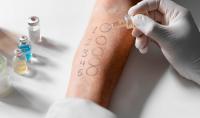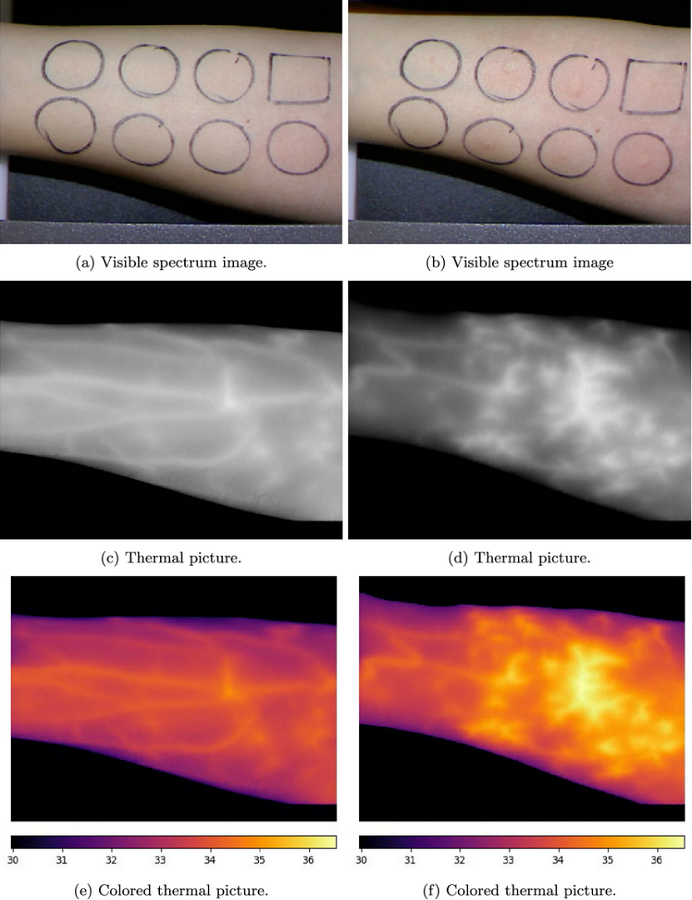Artificial intelligence will help to read skin tests
People with allergy symptoms can breathe a sigh of relief – thanks to the SkinLogic diagnostic solution co-created by a team from the Faculty of Electronics and Information Technology, it will be possible to conduct skin allergy tests more efficiently and obtain more reliable results.
A great number of those who are allergic or suspect that they might be allergic know this pattern all too well – a visit to a specialist, puncturing with a special knife fragments of the forearm on which drops of allergen have been applied, 20 minutes of waiting for the result, and finally – measuring the bubbles with a ruler. Researchers led by Prof. Roberta Nowak from the Faculty of Electronics and Information Technology together with a team of Prof. Jacek Stępnień (Milton Essex) and researchers from the Military Medical Institute have come up with a solution which is supposed to help improve this pattern.
Introduction to Diagnosis
From an IT point of view, SkinLogic is a data processing system. It is based on a device consisting of a tripod and two cameras: video and thermal imaging.
The patient's hand is immobilized in the tripod. The machine takes photos in visible and infrared light at fixed moments, recording what happens on fragments of skin treated with allergens. After receiving the documentation in digital form, it is time to use the algorithm created at WUT.
According to a standard procedure, the measurement of an allergic reaction is manual and not completetly accurate. In the case of SkinLogic, the algorithm performs the measurement using images from the cameras. The system examines not only the size of the reaction, but also other parameters such as shape or unusual reactions. At this stage, the view obtained with the use of the far infrared spectrum is particularly helpful.
Pixel Accuracy
The analysis of the digital material is based on dividing the photos into segments corresponding to the location of punctures on the skin. Each of these segments can be examined separately. The analysis of data over time shows how the studied fragment changed.
The model on which SkinLogic is based was made on the basis of 1,500 images of skin allergic reactions collected in clinical trials of 100 patients. These records developed by doctors were input data for the artificial intelligence system. Based on them, the algorithm could learn how to recognize which view presents an allergic reaction and which does not.
– What we obtain thanks to the camera images are 100 x 100 pixels images. The doctor who examines the allergy bubble can only examine a visible surface area with the naked eye. We examine all the pixels from the received images. It can therefore be stated that the standard diagnosis is based on one value, and the reaction studied by artificial intelligence is based on a million values and detected combinations – says Prof.Robert Nowak, head of the Artificial Intelligence Division. – For a human, finding these patterns would be extremely tedious, a trained algorithm can handle this task quickly and is very accurate at that. More data denotes more noise to be eliminated, nevertheless, the algorithm also handles this problem as well. Our system trained on a set of formulas developed by the medical consilium, so it has a high quality foundation – emphasizes our researcher.
This is confirmed by clinical studies of the system, which correctly recognizes as many as 98% of cases, including rare allergies. Owing to SkinLogic, it is possible to detect lesions with a diameter of less than 0.3 mm.
Halt Allergic March
The system automating skin allergy test readings is undergoing pre-registration tests. Making it available to a popular use may prove to be a huge asset in a reality where allergic diseases, including asthma, affect an increasing part of the population. Faster diagnoses, precise results and the possibility of wider consultation through digital documentation are intended to facilitate diagnosis and decision-making regarding the application of appropriate treatment in order to inhibit the development of the disease.
The results of research on the model developed by a multidisciplinary team of specialists from MILTON ESSEX SA (project leader), Warsaw University of Technology and the Military Medical Institute were published in Scientific Reports. Scientific Reports.









